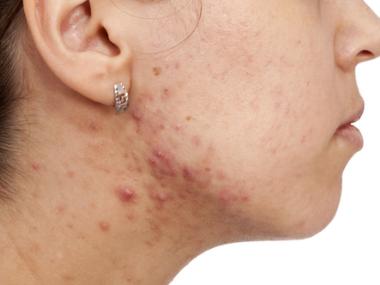What Is Ringworm?
Do you or your kids have an itchy, ring-like rash on your body? Ringworm is very common. Find out what it is, how you contract it, and how to get rid of it using over-the-counter treatment.
Spring has officially arrived. As we rejoice for warmer temperatures, we prepare ourselves for the upcoming fun in the sun summer months. This means we can finally store away the sweaters, boots, and scarves, and unpack our shorts, flip flops, and swimsuits.
It also tends to be that time of year we pay greater attention to our skin, technically the largest organ in the body. As a primary-care physician, besides dry skin and moles, one of the most common skin ailments I see in clinic is fungal in origin. “Ringworm,” a term you may have heard of, is actually quite common.
What is ringworm? How do we get it? And how do we get rid of it?
What Is Ringworm?
The term “ringworm” is a misnomer. No, it is not caused by a “worm” in any way, and is referred to as “tinea corporis”—where “tinea” refers to a type of fungus, and “corporis” simply means “body.” It is indeed a fungus that seeps through and causes a rash on the superficial skin layers. It is contagious, and often contracted by touching another person or object carrying the same fungus.
It’s common in children, who tend to more frequently forgo the handwashing and cannot help but touch everything in sight, and in sweaty wrestlers who come into as close contact as it gets to the skin of their opponents.
What Does Ringworm Look Like?
Its appearance is rather characteristic. It is a circular or oval, ring-like, red rash with a distinct and raised border and sometimes with scaling over the top. As it grows in size (which it does through time), the center of the rash tends to clear up, leaving a very active and infectious border.
Most often I see one ringworm spot on the skin, perhaps two or three. But it is not one of those rashes that spreads over the entire body, like allergic reactions do. It is usually itchy, but perhaps not enough to drive you to crawl out of your skin, like another super itchy rash I’ve discussed called scabies.
Treatment of Ringworm
Unfortunately, fungal infections are one of the most stubborn to treat. Cold/flu viruses often self-resolve within a week or two, and many bacteria resolve with a short course of antibiotics (if it truly is bacterial). But a fungus can take weeks, even a month or two, to completely resolve.
The recommended treatment of choice happens to be over-the-counter and easy to access without a prescription—antifungal creams like clotrimazole and miconazole used 2-3 times daily will clear up the fungus typically within a month.
Oral prescription medications can also be considered for those who fail therapy with the antifungal creams. However, they do carry a small risk of liver toxicity, and therefore, not always the agent of choice.
For those with persistent ringworm infection despite treatment, or those with extensive disease, it’s vital to think about:
-
An immune disorder or condition that suppresses the immune system: HIV, Diabetes, chronic corticosteroid therapy.
-
Conditions with similar-appearing rashes: Lupus, Eczema, Psoriasis.







